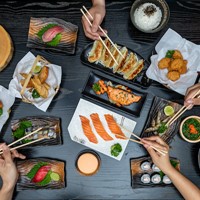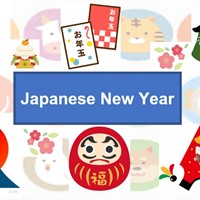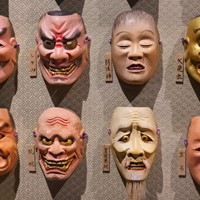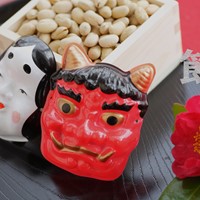Exploring Ikebana, The Art of Japanese Flower Arranging
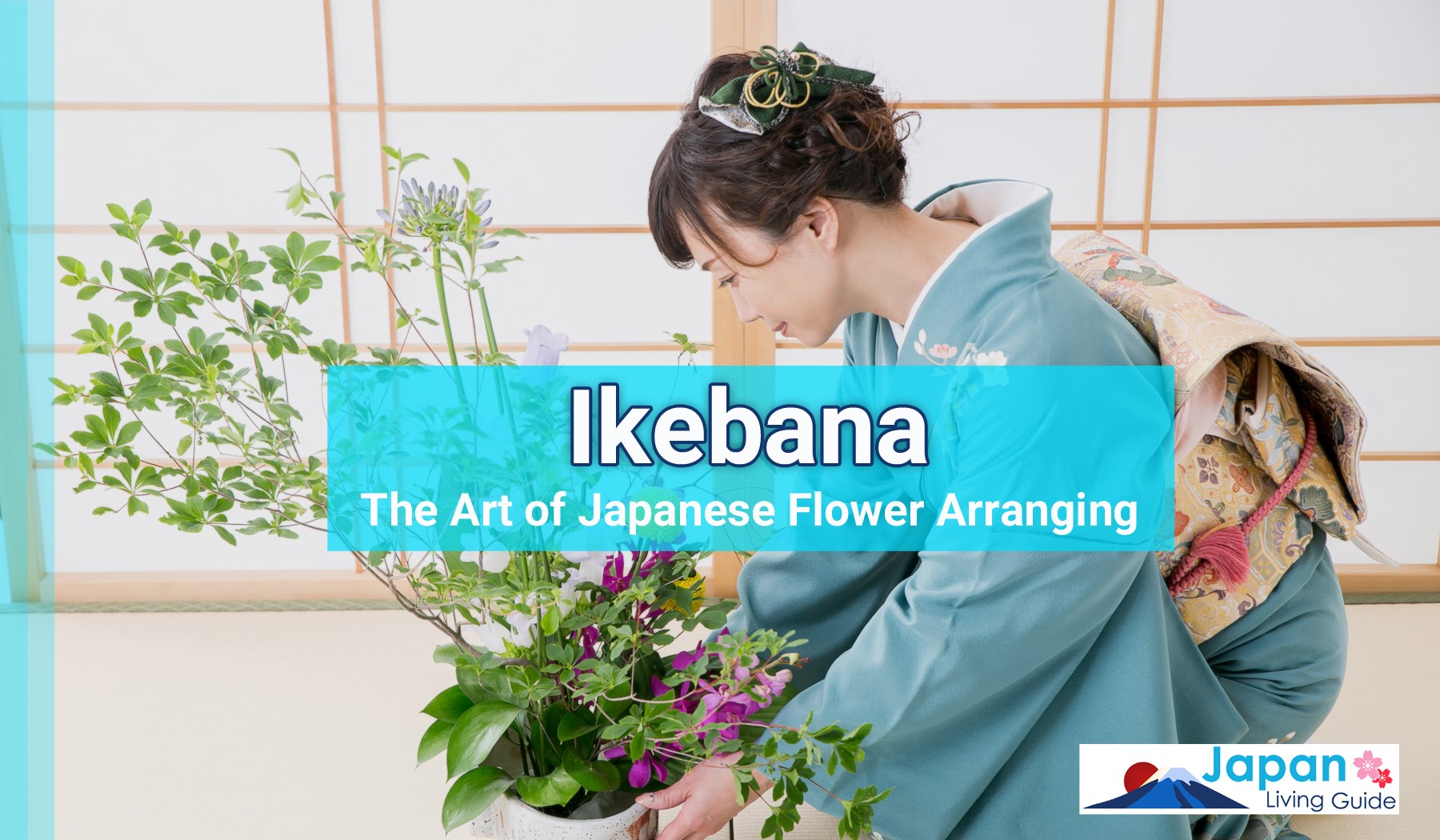
Ikebana is the traditional art of Japanese flower arranging, but don’t mistake it for a version of Western-style floral arrangements – there’s a lot more to ikebana than initially meets the eye. With its origins in the spiritual, and its minimalist style that focuses on shape and line, leaf and stem as much as the blooms themselves. It quickly becomes evident that ikebana can be satisfying on several levels, whether you want to delve deeper into the richness of it as a practice, or simply create aesthetically pleasing arrangements.
Ikebana History and Philosophy
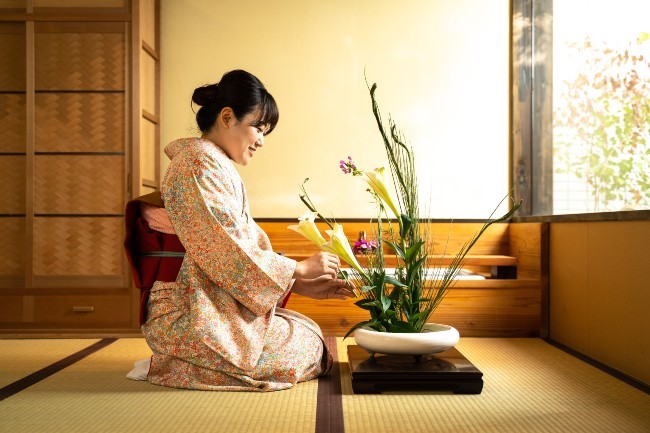
When Buddhism was introduced to Japan in the 6th century, so was the ritual of offering flowers at temples. In the middle of the 15th century, a priest in Kyoto called Senkei Ikenobo (so named because he lived by a lake, or Ike) became known for his floral offerings and soon other priests began to learn from him. The formal art of ikebana began here, with its roots in the spiritual life – it is significant that ikebana, which means “living flowers,” is alternatively known as kado, “the way of flowers.”
Ikebana’s harmonious display is based on three branches that represent heaven, earth and humankind. Originally there were seven branches representing a Buddhist expression of the beauty of nature, and these were characteristic of the rikka (standing flowers) style that Ikenobo is credited with starting. Ikebana quickly spread from priests to the upper classes, and by the late 15th century was frequently displayed in the tokonoma (recessed alcoves) in private residences. It became elaborate, requiring great skill, when it was also a chief decoration in many of the newly constructed castles around Japan in the 17th century.
The tea ceremony appeared around the same time, and its emphasis on simplicity brought about the chabana style, which was less rigid. Over the centuries, multiple schools of ikebana developed, but modern ikebana dates from the 1930s, when changing philosophies gave rise to more freestyle, expressive forms.
Regardless of school or style, ikebana has long been practiced as a kind of meditation. For many people it is both a personal expression and a study of nature and spirituality, exploring balance and appreciating the cycle of life.
Ikebana Styles
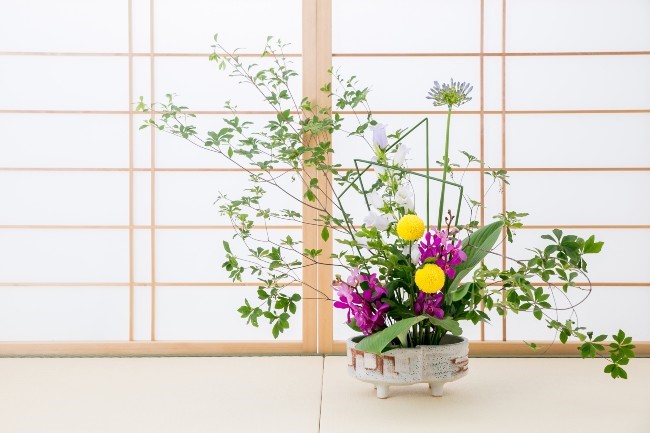
While there are numerous ikebana styles, nageire and moribana are two of the most prominent today. Distinguishable primarily by the fact that the former is vertically displayed while the latter is low and horizontal, they also emerged from different cultural environments, as did the freestyle ikebana of the early 20th century. All ikebana styles, however, consider the container an integral part of the design and make use of negative space, and all seek to find harmony between and reveal the essence of the natural elements they employ.
Nageire
Translating as “thrown in,” nageire rose out of the chabana style that was developed for the tea ceremony. Chabana sought to enhance the beauty of the vase itself and express a purity and simplicity in keeping with the ceremony, rather than creating a skillful, decorative and heavily symbolic display, as in the rikka style. Nageire, following in the footsteps of chabana, highlights the natural beauty of each element and allows a certain spontaneity. In practical terms, the vases used in nageire are tall and cylindrical and often have a narrow mouth. The stems are inserted into the vase without a kenzan (a holder made of metal pins) and special techniques are used instead to keep them in the desired positions.
Moribana
The Meiji era brought many changes to Japan and in this environment, moribana – the “piled up flowers” style of Japanese flower arranging – was developed by Ohara Unshin in the late 19th century. As Western influences poured into Japan, he upended much of what was thought of as normal ikebana practice and started arranging flowers, leaves and other plant matter in wide, shallow dishes. In this style, new and imported materials with short stems could be incorporated, reflecting an opening to the rest of the world. In the older ikebana styles, each element emerges from the vase at a single point, but in moribana the pieces lie next to each other in a flat, water-filled basin. The structure allows for naturalistic renderings of landscapes and gardens in miniature, but it is just as usual to create moribana arrangements that use the traditional three branches and spread wide or tall.
Freestyle
Of course, not all Japanese flower arranging styles are bound by strict principles. As the name suggests, freestyle ikebana allows complete freedom to select the flowers that best suit the vase and then arrange them as desired. While the flowers must still be arranged in a way that best shows their characteristics, how this is achieved is open to the interpretation of the creator. It is a far cry from the oldest forms of classical ikebana, which prescribe shapes and designs and indicates how far ikebana has come since its inception more than 600 years ago. Amid the social changes of the early 20th century, free and creative expression was valued, and even modern art influenced this traditional practice in the form of an avant-garde form called zen-eibana that incorporated abstract and surrealist approaches.
If you are looking for Ikebana Classes in Tokyo, please visit: Learning Ikebana / Ikebana Classes in Tokyo

